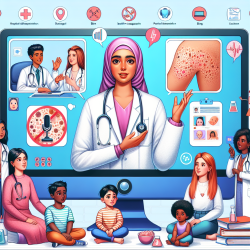Introduction
The COVID-19 pandemic highlighted and exacerbated existing health inequities, particularly among Latinx immigrant and Indigenous communities. The research paper titled Movement Pandemic Adaptability: Health Inequity and Advocacy among Latinx Immigrant and Indigenous Peoples provides a deep dive into how these communities have adapted to these challenges through social movements and advocacy. As practitioners focused on improving health outcomes for children, especially those from marginalized communities, understanding these dynamics is crucial.
Understanding Movement Pandemic Adaptability
The concept of "movement pandemic adaptability" is central to the research. It refers to the strategies used by Latinx immigrant communities to leverage existing networks and solidarities to address health vulnerabilities. These strategies include providing culturally relevant resources and overcoming barriers such as language and immigration status.
For practitioners, this means recognizing the importance of culturally and linguistically appropriate interventions. Incorporating these elements into therapy and educational practices can significantly improve engagement and outcomes for children from these communities.
Practical Applications for Practitioners
- Language Access: Ensure that therapy services are available in the preferred languages of the children and families you serve. This includes Spanish and Indigenous languages, which are often spoken in Latinx communities.
- Cultural Relevance: Tailor your interventions to be culturally sensitive. This involves understanding the cultural contexts and values of the families you work with.
- Community Engagement: Collaborate with local community organizations that are already working with Latinx immigrant communities. These organizations can provide valuable insights and resources.
- Advocacy and Policy Awareness: Stay informed about policies affecting immigrant communities. This knowledge can help you advocate for your clients and navigate systemic barriers they may face.
Encouraging Further Research
While the study provides valuable insights, it also highlights the need for ongoing research. Practitioners can contribute to this by documenting their experiences and outcomes when implementing culturally and linguistically appropriate interventions. Sharing these findings can help build a body of evidence that supports the effectiveness of such approaches.
Conclusion
By understanding and applying the concept of movement pandemic adaptability, practitioners can play a vital role in addressing health inequities among Latinx immigrant children. This not only improves individual outcomes but also contributes to broader systemic change.
To read the original research paper, please follow this link: Movement Pandemic Adaptability: Health Inequity and Advocacy among Latinx Immigrant and Indigenous Peoples.










